Ozonechain Token Value Calculator
Token Economics Calculator
Calculate the relationship between token price, circulating supply, market cap, and fully diluted valuation (FDV) for Ozonechain.
Quick Takeaways
- Ozonechain (OZONE) launched in September 2022 as a Cosmos‑SDK Layer1 chain claiming high speed and a "5th Layer Security System".
- Only 50,000 of the 10million OZONE tokens are circulating, giving the token a tiny liquidity pool.
- Current price sits around $5.16, market cap $272,580, while the fully diluted valuation (FDV) exceeds $54million.
- Technical claims (billions of TPS, quantum‑resistance) lack public audits or detailed documentation.
- Community activity is minimal and mainstream crypto media give the project almost no coverage.
What Exactly Is Ozonechain?
At its core, Ozonechain is a decentralized finance (DeFi) platform that introduced its native utility token, OZONE, on 16 September 2022. The team behind the project ranges between 201 and 500 employees, according to business listings, but founder identities remain undisclosed. Marketing material tags Ozonechain as a "fifth‑generation blockchain" that aims to power digital finance, metaverse experiences, travel, and e‑commerce solutions.
Technical Foundations - Cosmos SDK and EVM Compatibility
The official site says Ozonechain is built with the Cosmos SDK, a modular framework for building sovereign blockchains that can interoperate via the Inter‑Blockchain Communication (IBC) protocol. By leveraging Cosmos, Ozonechain claims to inherit high throughput and easy cross‑chain communication.
On top of that, Ozonechain advertises full Ethereum Virtual Machine (EVM) compatibility, meaning developers familiar with Solidity can deploy smart contracts without learning a new language. In theory, this dual‑layer design - Cosmos for the base layer and EVM for the smart‑contract layer - should give the network flexibility and attract existing Ethereum developers.
Token Economics - Supply, Distribution, and Utility
The OZONE token has a hard cap of exactly 10000000 units. Yet, as of October 2025, only 50000 tokens (0.5% of total supply) are in circulation, according to market aggregators. This unusually low circulating supply inflates the Fully Diluted Valuation (FDV) to roughly $54.5million while the actual market capitalization lags at about $272580.
In the whitepaper, OZONE is described as a utility token that fuels transaction fees, participates in governance votes, and unlocks premium services within the Ozone ecosystem. However, concrete governance mechanisms or fee structures are not publicly detailed, leaving potential users guessing about real‑world usage.
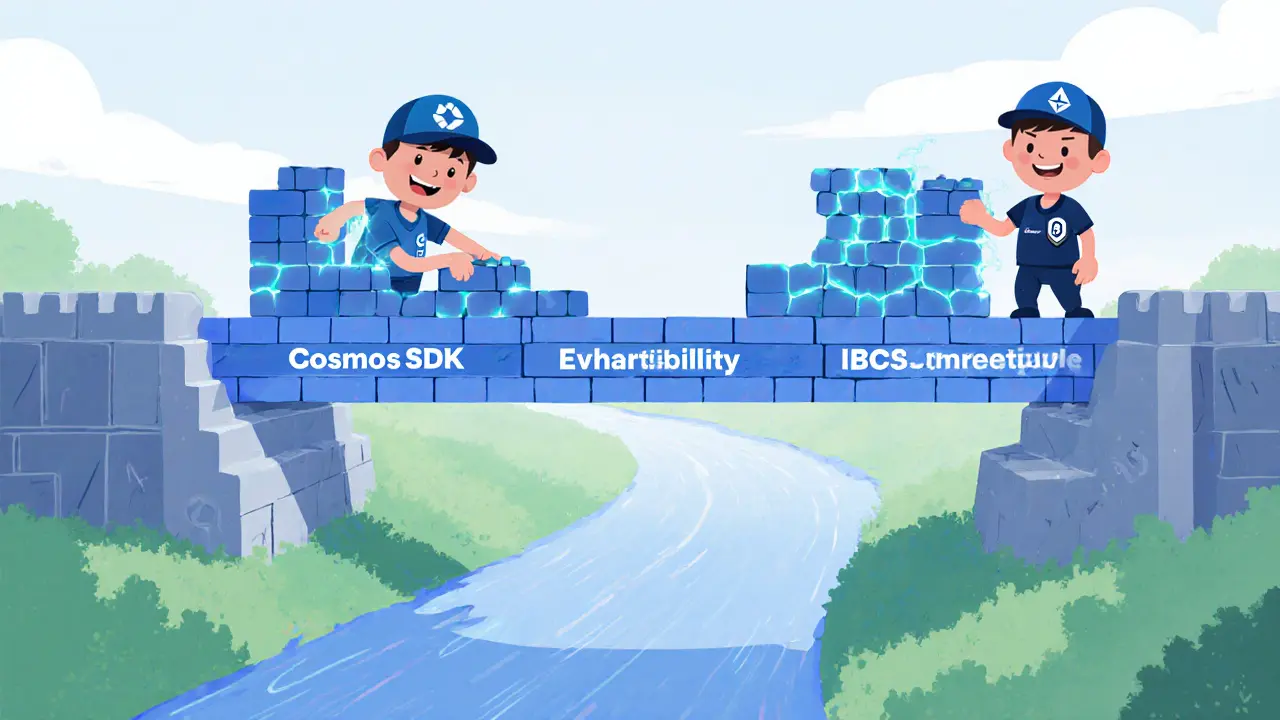
Market Performance and Price Analysis
Recent price data shows OZONE trading near $5.16 on major aggregators, with a 24‑hour volume of $370k. The token’s 14‑day Relative Strength Index (RSI) sits at 22.9, indicating oversold conditions, while the 50‑day and 200‑day simple moving averages rest at $8.83 and $8.02 respectively - both well above the current price. These moving‑average gaps suggest a persistent downtrend.
Volatility numbers from CoinCodex rate OZONE at 14.75%, meaning price swings are fairly pronounced for a coin of its size. Forecasts from the same source predict a further decline toward $4.35, a drop of about 25% from current levels.
Security Claims - The “5th Layer Security System”
Ozonechain markets a proprietary "5th Layer Security System" but provides no technical whitepaper or audit to substantiate the claim. No reputable security firm has published a formal review, and the project’s code repository on GitHub shows limited public activity. Without third‑party verification, the security narrative remains a marketing tagline rather than a proven feature.
Some sources mistakenly associate Ozonechain with a separate "Ozone Chain" (ticker OZO) that touts quantum‑resistant features such as lattice‑based cryptography and laser‑generated random numbers. That project appears distinct, and the official Ozonechain site makes no mention of quantum resistance, adding to the confusion around the brand.
Community, Adoption, and Ecosystem Health
Community metrics are stark. On CoinMarketCap, OZONE has virtually no user reviews or forum threads. Reddit searches return zero substantial discussions, and the project's social channels (Twitter, Facebook, GitHub) show low follower counts and limited engagement. The lack of a Discord or active developer forum makes it hard for newcomers to get support.
From a usage perspective, no major dApps, DeFi protocols, or enterprise partnerships have been announced. The token’s primary listed pairs are OZONE/USDT on LBank and BitMart, restricting trading options and contributing to low liquidity.
Risks and Red Flags
- Token distribution: Only 0.5% of tokens are circulating after almost three years, hinting at possible lock‑ups or undisclosed holdings.
- Liquidity constraints: Small trading volume relative to FDV may lead to price manipulation or slippage for larger orders.
- Technical opacity: No publicly available audit, unclear security architecture, and absent developer docs hinder trust.
- Market visibility: Lack of coverage from mainstream crypto media suggests limited interest from investors and analysts.
- Regulatory uncertainty: As a utility token with a highly concentrated supply, OZONE could attract scrutiny under securities laws in major jurisdictions.
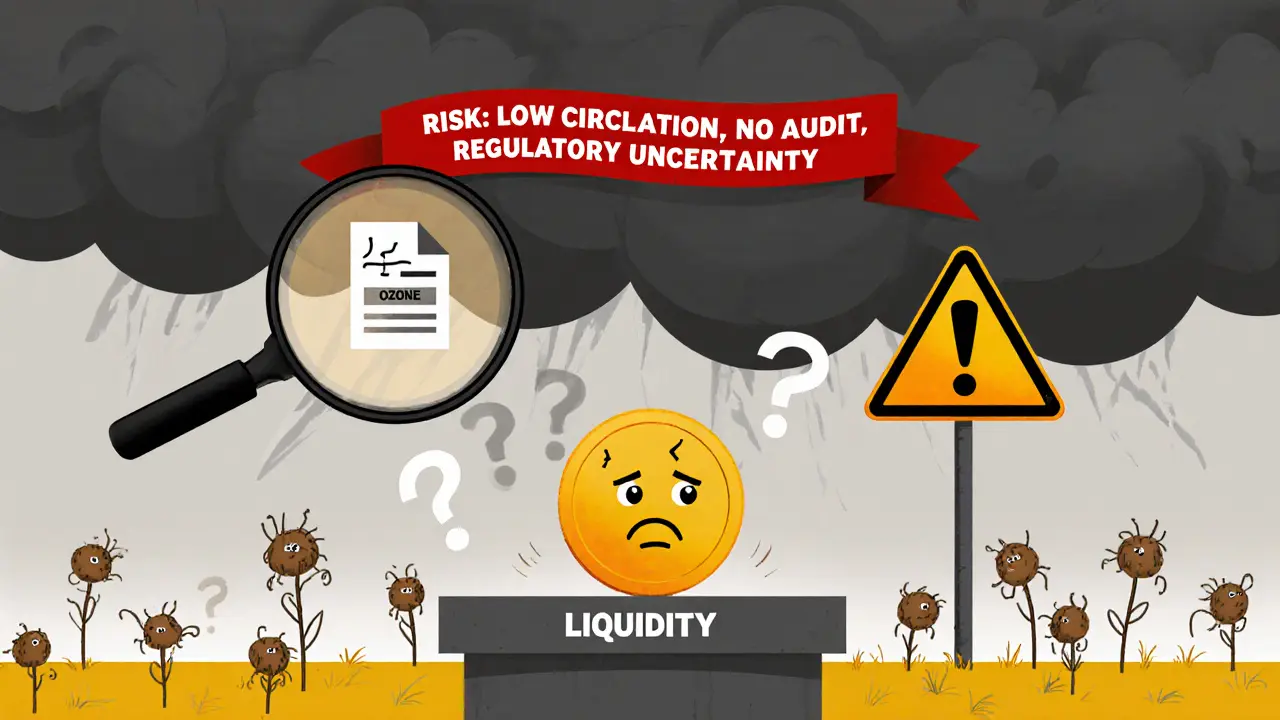
Comparison Snapshot - Ozonechain vs a Typical DeFi Token (e.g., Uniswap UNI)
| Metric | Ozonechain (OZONE) | Uniswap (UNI) |
|---|---|---|
| Launch Date | 16 Sep 2022 | 16 Sep 2020 |
| Total Supply | 10,000,000 OZONE | 1,000,000,000 UNI |
| Circulating Supply | 50,000 (0.5%) | 587,000,000 (58.7%) |
| Market Cap | $272,580 | $6.2B |
| FDV | $54.5M | $10.5B |
| Tech Base | Cosmos SDK + EVM | Ethereum Layer2 |
| Community Size (Twitter Followers) | ~1,200 | ~1.1M |
| Liquidity (24‑h Volume) | $370k | $1.4B |
Future Outlook - Where Could Ozonechain Go?
If the team releases a transparent roadmap, publishes code audits, and opens developer resources, OZONE could attract niche DeFi projects looking for a low‑circulation token with high perceived valuation. The Cosmos ecosystem continues to grow, and EVM compatibility remains a valuable bridge for Ethereum developers.
However, without visible progress, the token is likely to stay in the shadows, with price movements driven mainly by speculation rather than real usage. Investors should treat OZONE as a high‑risk, speculative asset and consider the token’s current liquidity and distribution before committing capital.
Bottom Line
Ozonechain presents an ambitious pitch - a fast, secure, fifth‑generation blockchain powered by a utility token. In practice, the project suffers from scarce liquidity, limited community, and a lack of verifiable technical documentation. Those looking for a proven DeFi platform would probably look elsewhere, while risk‑tolerant speculators might watch the price for short‑term swings.
Frequently Asked Questions
What is the primary purpose of the OZONE token?
OZONE is meant to act as the native utility token for transaction fees, governance voting, and access to premium services within the Ozonechain ecosystem, although detailed mechanisms are not publicly disclosed.
How many OZONE tokens are currently in circulation?
Around 50,000 tokens, which is roughly 0.5% of the total 10million supply.
Is Ozonechain compatible with Ethereum smart contracts?
Yes, the platform advertises full EVM compatibility, allowing developers to deploy Solidity contracts without major changes.
Where can I trade OZONE?
The token is listed mainly on LBank and BitMart against USDT. Liquidity is limited, so trade sizes should be modest.
What are the main risks of investing in OZONE?
Key risks include an extremely low circulating supply, scarce liquidity, unverified security claims, minimal community support, and possible regulatory scrutiny due to the token’s utility nature.
Has Ozonechain released any code audits?
No reputable third‑party audit has been published to date, and the project's GitHub repository shows limited public code.
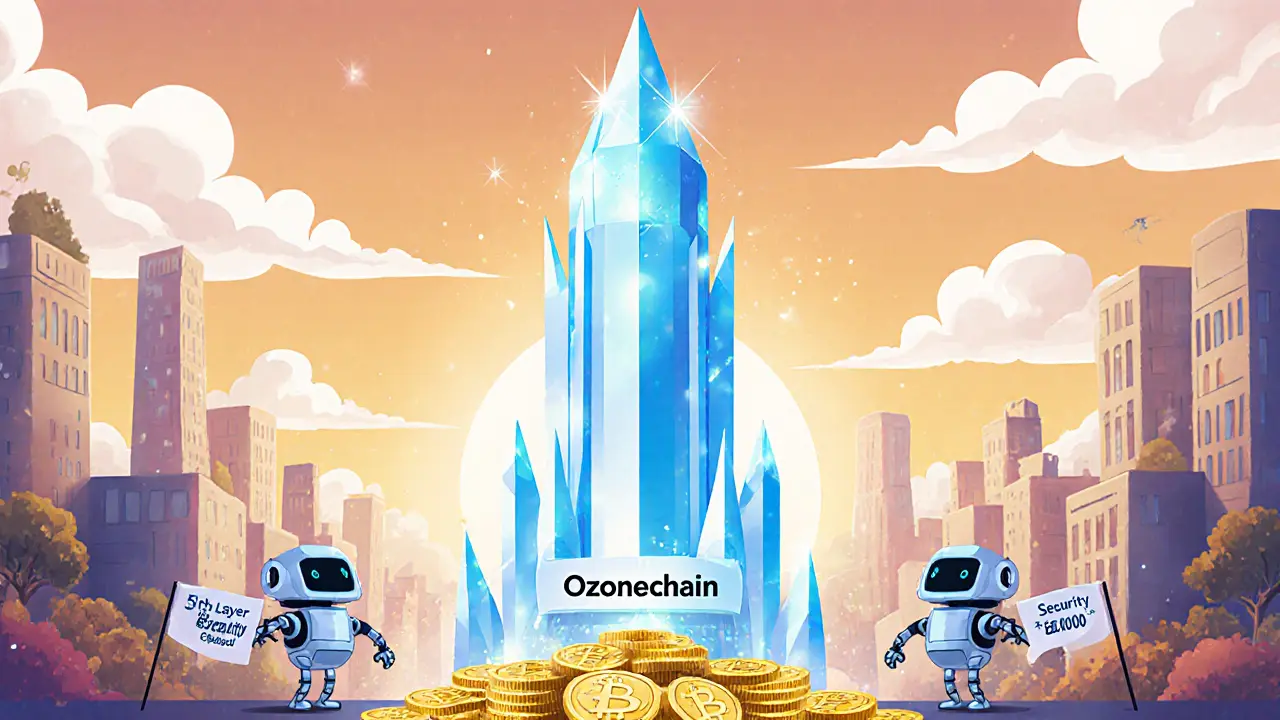
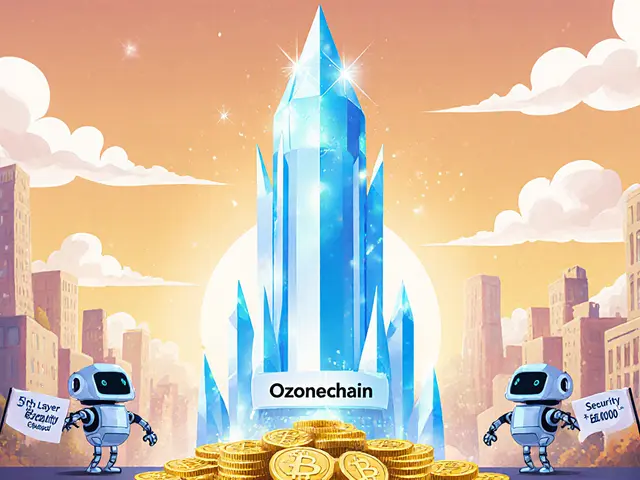
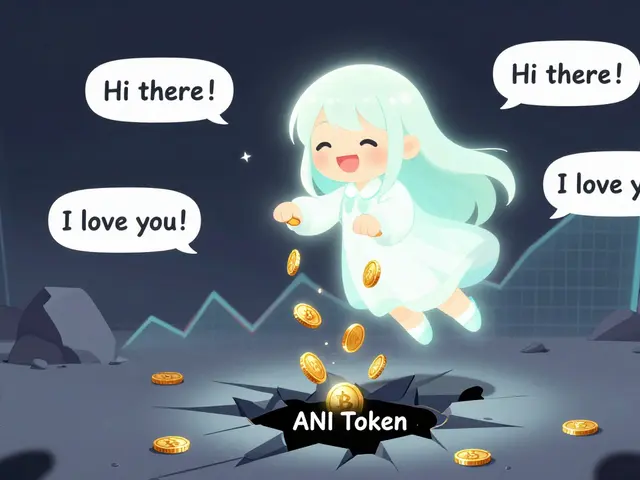
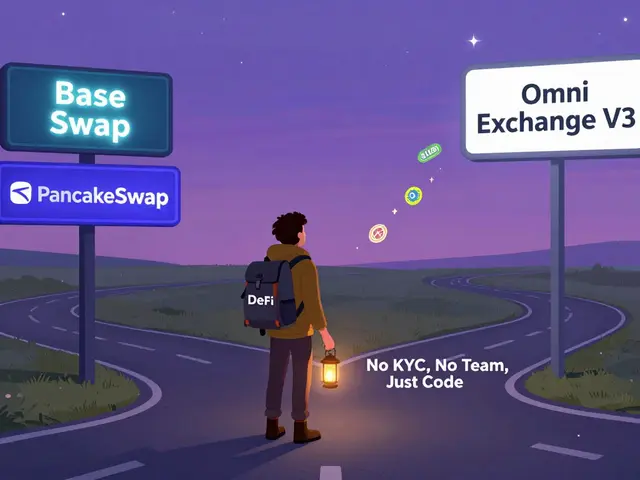
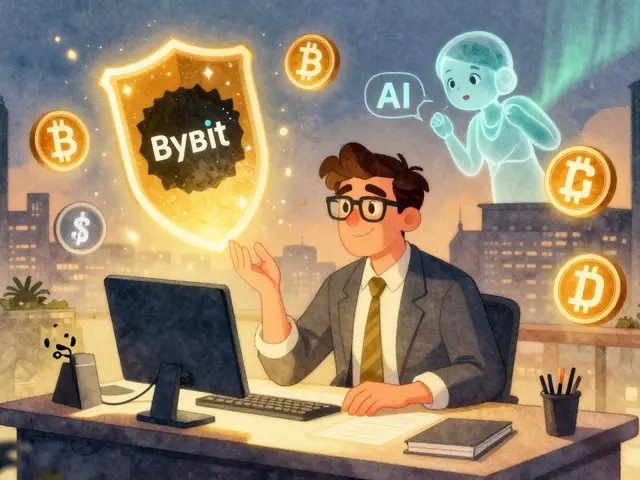
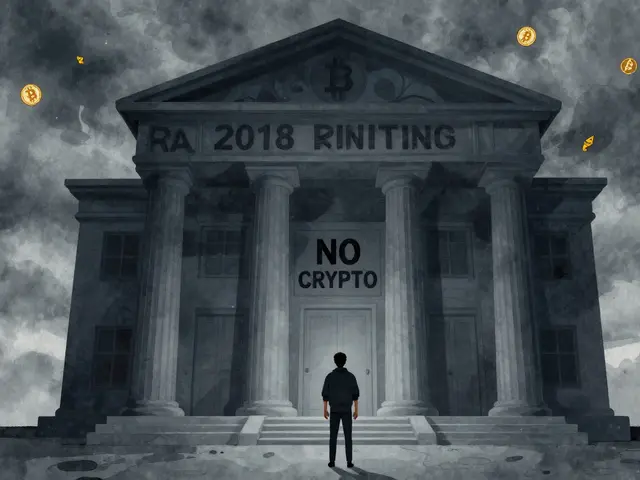

Shane Lunan
October 13, 2025 AT 02:23Looks like another overhyped token with a tiny supply.
Jeff Moric
October 19, 2025 AT 23:07While the hype can be blinding, it's worth remembering that low liquidity often leads to big price swings. Investors should keep an eye on real utility rather than marketing fluff.
Bruce Safford
October 26, 2025 AT 19:51Yo, the whole thing smells like a secret repo holding the rest of the coins. If they drop the lock‑ups tomorrow, we could see a dump that'd make other projects look like cake.
Jordan Collins
November 2, 2025 AT 16:34The tokenomics here are curious, especially with only 0.5% circulating after three years.
Andrew Mc Adam
November 9, 2025 AT 13:18Exactly, and that tiny floating supply inflates the FDV, turning the price chart into a mirage. For developers, the lack of published audits makes integration risky.
Shrey Mishra
November 16, 2025 AT 10:02From a regulatory lens, a utility token with such concentration could attract securities scrutiny in many jurisdictions.
Ken Lumberg
November 23, 2025 AT 06:45Ethically, projects that hide their team and token distribution undermine trust in the whole crypto space.
Blue Delight Consultant
November 30, 2025 AT 03:29Ozonechain presents an intriguing case study of how marketing can outpace substance in the blockchain arena. Its claim of a '5th Layer Security System' reads more like sci‑fi jargon than a vetted security protocol. When a project touts billions of transactions per second without open‑source benchmarks, skepticism is the rational response. The token's supply dynamics are equally perplexing, with only fifty thousand tokens actively traded while the total cap sits at ten million. Such a disparity inflates the fully diluted valuation, creating an illusion of market confidence that evaporates under scrutiny. Liquidity, as reflected by the modest daily volume, is insufficient to support sizable trades without severe slippage. Moreover, the absence of a third‑party audit leaves the purported security claims on shaky ground. Developers looking for robust platforms typically gravitate toward ecosystems with transparent code audits and active community support. In contrast, Ozonechain's GitHub activity is sporadic, offering few commits and limited documentation. Without clear governance mechanisms, token holders are left guessing about voting rights and fee structures. Regulatory bodies may interpret this opacity as a red flag, potentially classifying the token as an unregistered security. The project's promotional material also conflates unrelated technologies, muddying the narrative for potential investors. A healthy blockchain project usually provides a roadmap, milestones, and regular updates, none of which appear prominently here. Investors must weigh the speculative allure of a low‑circulation token against the tangible risks of illiquidity and informational asymmetry. Ultimately, while the concept of a dual Cosmos‑SDK and EVM layer is sound in theory, execution and transparency remain the decisive factors.
Wayne Sternberger
December 7, 2025 AT 00:12Thank you for the thorough analysis; it's essential to separate hype from reality when evaluating emerging chains.